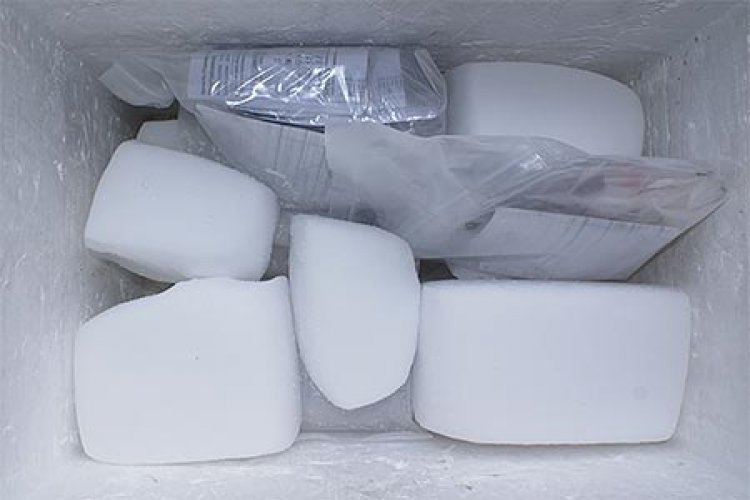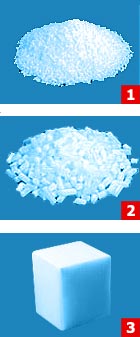Safe transport of specialized shipments
Safe transport of specialized shipments


Dry ice - it is solid carbon dioxide CO2, obtained from liquid CO2 under pressure, by quickly expanding to atmospheric pressure (1013.25 hPa) and then compressing. Used for cooling (does not moisten refrigerated materials) in refrigeration alone or as a component of cooling mixtures, e.g. with acetone, methyl alcohol and diethyl ether.
Features:
Under normal conditions, dry ice does not melt but sublime in the air (taking heat), i.e. it changes state of solid from gas to liquid, bypassing the liquid state. This process causes spontaneous cooling of dry ice to -78.5°C.
Dry ice is classified in the middle price range and is a commonly used cooling agent in laboratories, industrial cold stores and in the transport of perishable food products. Dry ice in blocks can be stored relatively long in thermally insulated containers without the need for additional cooling, e.g. in foamed polystyrene packaging placed in special containers, the loss of dry ice is about 4% per day.
Uninsulated large blocks of dry ice sublime quite slowly. For example, a block with a volume of 1 dm3 sublimates at room temperature in a closed room for about 2-3 hours. This sublimation can be accelerated by breaking the blocks into smaller fragments, by pouring them on water or using organic solvents such as acetone.

In laboratory baths, dry ice is usually used as a cooling mixture consisting of crushed dry ice and an organic solvent with a low freezing point (<-80 ° C), e.g. acetone or ethanol.
Thanks to this, it is increasingly used in many industries, such as:
In the transport of laboratory materials, we usually use three types of dry ice sizes depending on the needs: